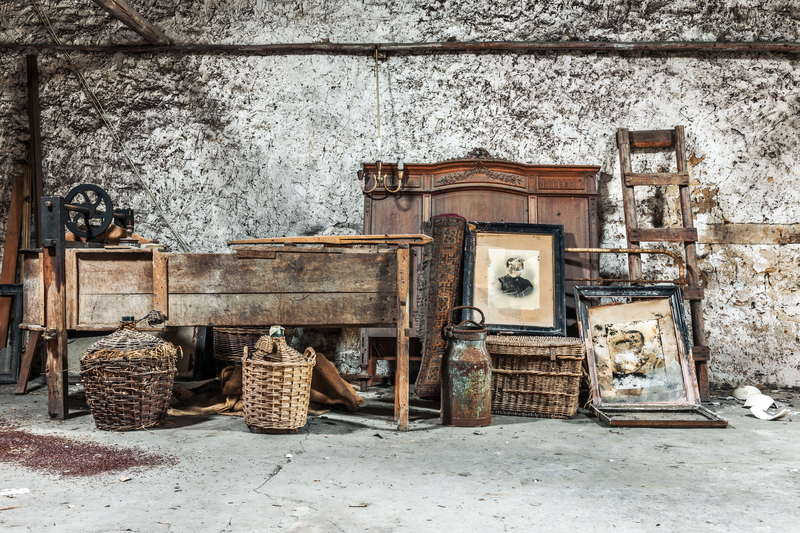The Real Risks of Moving a Piano Yourself and What You Could Lose
Moving a piano is not like shifting a chair or dragging a sofa. It's a daunting task that poses risks you might not have considered--both to the instrument and to yourself. If you're contemplating the idea of handling a piano move independently, "The Real Risks of Moving a Piano Yourself and What You Could Lose" should be on your must-read list. This comprehensive guide illustrates why hiring a professional is often a better choice.
Understanding the Complexity of Moving a Piano
Pianos are more than just musical instruments--they are intricate works of art. With thousands of delicate parts, from the polished wood exterior to the sensitive internal mechanisms, even a minor mistake can result in significant damage. Let's explore what makes moving a piano so complicated:
- Heavy weight: Even the smallest upright piano can weigh over 300 pounds, while concert grand pianos can exceed 1,200 pounds.
- Size and Bulk: Their odd shapes and sizes make gripping and maneuvering difficult, especially in tight spaces or around corners.
- Sensitive Components: Pianos contain fragile strings, hammers, and finely tuned soundboards that are highly susceptible to shock and vibration.
Attempting to move a piano yourself is a risky undertaking, fraught with potential hazards that can impact your wellbeing, your finances, and the integrity of your beloved instrument.

Physical Risks Involved in DIY Piano Moving
The physical dangers of moving a piano are not to be underestimated. Here's what you stand to risk if you proceed without professional help:
1. Personal Injury
- Back Strains and Sprains: Lifting a piano improperly can cause severe back injuries, muscle strains, and even permanent damage.
- Crushed Fingers and Toes: A sudden slip or shift could result in digits being trapped or crushed under the instrument's enormous weight.
- Slips, Trips, and Falls: Navigating steps or awkward angles greatly increases your risk of dangerous falls.
- General Fatigue: Exhaustion can slow your reaction times, making accidents more likely as the move progresses.
One misstep can send you or your helpers to the emergency room--adding unexpected medical expenses to your DIY adventure.
2. Property Damage
Your home itself is at risk during an amateur piano move:
- Scratched Floors: Piano feet or casters sliding across wood or tile can leave unsightly scratches or gouges.
- Dented Walls or Doors: Miscalculating a turn can scuff, dent, or even puncture drywall and doors.
- Stairway Damage: A dropped piano can crack banisters or cause permanent structural damage.
Repairs to flooring, walls, and stairs can quickly surpass the cost of hiring professional movers.
Why Is Moving a Piano So Dangerous?
What sets piano moving apart from shifting other bulky furniture? Here are the key factors increasing the risks:
- Weight Distribution: Pianos are notoriously top-heavy and off-balance, making them prone to tipping--especially on stairs.
- Complex Movements: Getting a piano around tight corners, through narrow doors, or over uneven ground requires experience and precision.
- Lack of Proper Equipment: Without piano dollies, straps, padding, and ramps, you're operating with a serious disadvantage.
- Experience Matters: Professional piano movers understand how to minimize risk to both piano and people--an understanding often lacking with DIY efforts.
Potential Damage to Your Instrument
What could you lose if you attempt to move a piano yourself? The answer is simple: the instrument's value, sound quality, and even its playability. Let's break down the main areas of risk:
1. Internal Mechanical Damage
- Tuning Disruption: Even a short move can knock your piano out of tune, requiring professional retuning services.
- Damaged Strings or Hammers: A bump or jarring movement can break delicate internal components.
- Soundboard Cracks: Sudden impacts can crack or split the soundboard, permanently diminishing the instrument's resonance.
2. External Cosmetic Damage
- Scratches and Dents: Poorly secured pianos often emerge from moves covered in dings and scratches.
- Chipped Edges or Broken Legs: Pianos can sustain cracks, splinters, or even lose decorative components during a botched move.
- Pedal and Key Issues: Mishandling may shift internal mechanisms, making pedals unusable or keys unresponsive.
3. Total Loss
In worst-case scenarios, amateur piano movers have seen instruments topple down stairs, shatter on concrete, or suffer irreparable structural damage. If your beloved heirloom or valuable grand piano is destroyed, insurance policies often do not cover accidents resulting from self-moves.
Common Myths About DIY Piano Moving
There are a lot of misconceptions about piano moving. Let's debunk the most common myths:
-
"If I get enough friends to help, we can manage."
The truth: Untrained individuals are at greater risk of injury and are more likely to cause damage. Even multiple helpers can't replace the specialized training pros have. -
"I can just rent a truck and use furniture pads."
The truth: While a truck and pads are helpful, piano movers use custom ramps, heavy-duty dollies, clamps, and strapping systems specifically designed for pianos. -
"Professional movers are too expensive."
The truth: The cost of repairing your piano or property--and possible medical bills--can far exceed professional moving fees. Also, many movers include insurance that protects your investment.
Cost Considerations: What You Could Lose Financially
Attempting to save money by moving a piano yourself can backfire. Here's a breakdown of potential costs to consider:
- Repair Bills: Fixing even minor scratches or mechanical issues can cost hundreds or thousands of dollars.
- Tuning and Regulation: Most pianos require expensive tuning and regulation post-move, especially if moved incorrectly.
- Loss of Value: Cosmetic and mechanical damage can reduce your instrument's resale value considerably.
- Insurance Gaps: Most homeowner policies do not cover self-inflicted damage during a move.
Do-it-yourself piano moving can become a financial nightmare if something goes wrong.
What Sets Professional Piano Movers Apart?
Professional piano movers provide much more than muscle. Here's what you get with a skilled crew:
- Expert Assessment: They evaluate the instrument, the layout of your space, and the best route--identifying risks before the move begins.
- Proper Equipment: Heavy-duty dollies, skid boards, and secure wrapping keep your piano and home safe.
- Trained Teams: Movers understand efficient lifting techniques and how to communicate, reducing the risk of accidents.
- Insurance Coverage: Reputable companies carry insurance that covers the instrument, property, and workers.
Added Convenience and Peace of Mind
Using professional movers means less stress, less physical exertion, and the peace of mind that comes with knowing your instrument's safety is in capable hands.
What to Look for in a Professional Piano Moving Service
If you decide to avoid the hazards of moving a piano yourself, here's what to consider when selecting a reputable company:
- Experience: Look for companies that specialize in piano moves and have positive client reviews.
- Insurance: Confirm comprehensive insurance that covers both transport and handling mishaps.
- Transparent Pricing: Avoid surprise charges--get a detailed estimate in writing.
- Proper Equipment: Ask about the tools and vehicles they'll use for your move.
A top-rated piano mover reduces all the risks discussed in this guide--protecting both your investment and your health.

Conclusion: Protect What Matters Most
The real risks of moving a piano yourself can far outweigh any potential savings. Beyond just physical injury, you're risking the beauty, value, and functionality of a prized instrument--and possible damage to your home and your wallets. Professional piano movers have the expertise, equipment, and insurance to ensure a safe, smooth transition.
So, before attempting to move your piano alone, ask yourself:
- Can I afford to repair or replace my piano if it's damaged?
- Am I willing to risk injury to myself or others?
- Is the opportunity cost of time, stress, and possible property damage worth saving a few dollars?
Remember, the value of your piano, well-being, and property greatly outweigh any perceived DIY moving benefits. Always consider hiring a trusted professional to manage your piano move safely and efficiently.
Frequently Asked Questions about Piano Moving Risks
-
Can all pianos be moved by amateurs?
No. Grand pianos, baby grands, and even upright pianos are heavy and require specialized handling. -
Does professional moving guarantee no damage?
While no move is entirely risk-free, professionals greatly minimize the chance of incidents--and their insurance covers unlikely mishaps. -
What's the worst that could happen if I move my piano myself?
Worst-case scenarios include severe injury, total destruction of the piano, and significant property damage.
Don't underestimate the real dangers of moving a piano by yourself. Protect your instrument, your home, and yourself. Leave piano moving to the experts.



